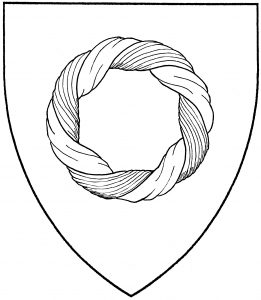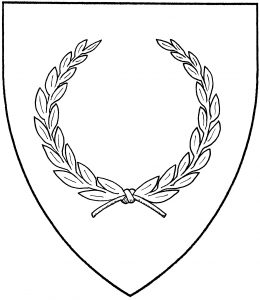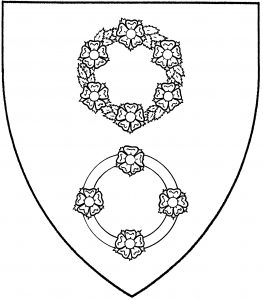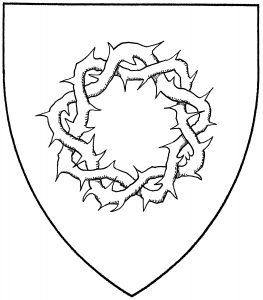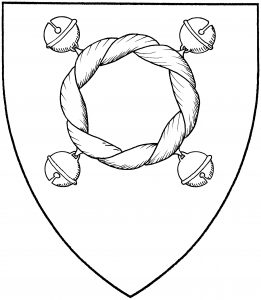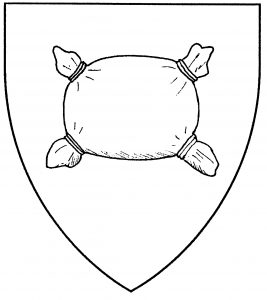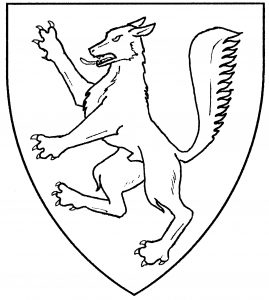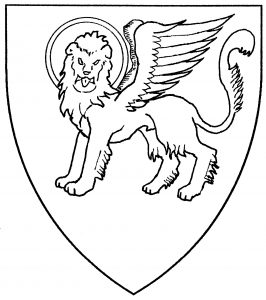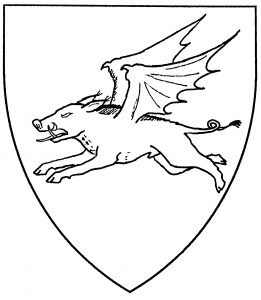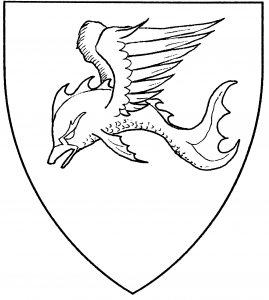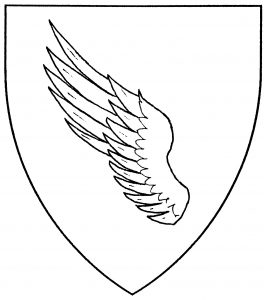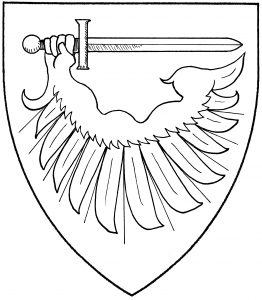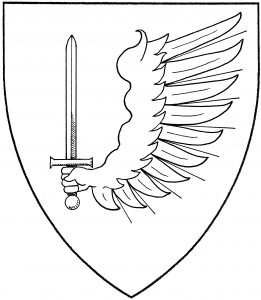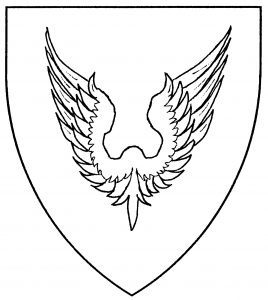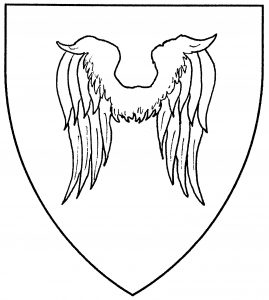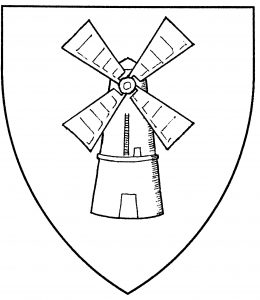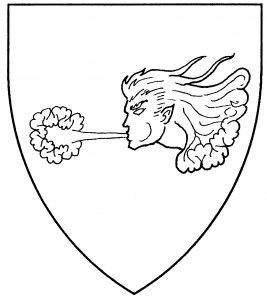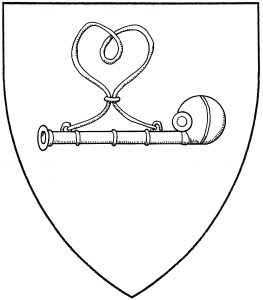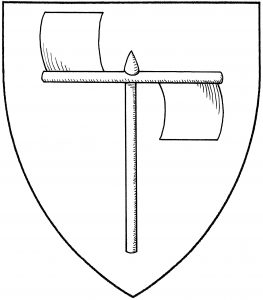The term “wreath” in Society heraldry refers to a circlet of foliage, usually with leaves alone, but sometimes with flowers. (This would be termed a “chaplet” in mundane blazonry, more on which below.) Laurel wreaths are the most common form in Society heraldry, being required in (and reserved to) the arms of each territorial branch. They are also a period charge, found in the arms of von Lenberg, 1605 [Siebmacher 90]. In mundane armory, laurel wreaths were almost always drawn in an annular form (full circle), but we also find examples drawn in a penannular form (with a small opening to chief); Society armory typically uses the penannular form.
Other foliage may likewise be used to make wreaths, so long as they can be distinguished from the reserved laurel wreath. The oak wreath is found in the canting arms of Schöneiche, 1605 [Siebmacher 50]; Society armory also has examples of holly wreaths and rosemary wreaths.
Mundane blazon uses the term “chaplet” to denote a circle of foliage; when the unmodified term “chaplet” is used, it refers to a closed annular wreath of flowers (typically roses). The classic heraldic chaplet dates from 1298, in the arms of FitzWilliam [ANA2 230]; it has four flowers in cross. Four is the usual number of flowers for the heraldic chaplet in England; chaplets with six flowers are found in German heraldry, such as in the canting arms of Rossenhart, c.1450 [Ingeram 24; also the arms of Thastner, mid-16th C., NW 45]. These chaplets were drawn with no foliage, being essentially annulets overlain with roses, but there are period examples of chaplets with both roses and leaves, as in the arms of von Houwald, early 16th C. [BSB Cod.Icon 392d:624]. The illustrations show a chaplet of roses in the German style and in the English style.The chaplet may also be called a “garland” for canting purposes, as in the arms of Garlond, 1347 [DBA4 459]. In the early days of the Society, a “garland” would have many flowers conjoined in annulo with little or no foliage; a “rose chaplet” would have four roses in cross; a “rose wreath” would have multiple roses, separated by rose leaves. This distinction (such as it was) between chaplets, garlands, and flowered wreaths is granted no heraldic difference, and indeed is often ignored by artists.
There are special terms for some types of wreaths and chaplets. A “chaplet graminy” is made of grass, with no flowers; it’s found in the arms of Goodall, 1612 [Parker 102]. A “chaplet of thorn” is woven of thorny branches, as shown on the head of Christ crucified; it’s found in the canting arms of Thornton, c.1525 [DBA2 486]. A “joscelyn” is a torse with four hawk’s bells, radiating from the outer edge; some sources [e.g., Franklyn 188] say the bells are in cross by default, but period examples of its use show the bells in saltire, as in the canting arms of Thomas Joselyn, mid-16th C. [BSB Cod.Icon 291:102. Cf. also Josellyn, of Essex, c.1520; DBA4 458].In Society armory, rose wreaths (chaplets, garlands, &c) are reserved to the arms of Queens, Princesses, and Royal Peers. Tradition grants rose wreaths (many flowers) to Queens, and rose chaplets (four flowers) to Princesses; but this is not mandatory, has never been strictly adhered to, and is left to the bearer’s discretion.
For related charges, see crown, slip.
The Society for Creative Anachronism bears: Or, a laurel wreath vert.
The Order of the Rose bears: A wreath of roses.
The Order of the Laurel bears: A laurel wreath.
The Baron of South Downs bears: Per pale sable and azure, a laurel wreath argent.
Noe College bears: Sable, three laurel wreaths Or.
The Order of the Coill’s Bells, of the Barony of Nottinghill Coill, bears: A joscelyn wreathed Or and vert with six bells Or.
Rosemary of Talmont bears: Azure, a rosemary wreath proper between three mullets of six points argent.
Corwin Blackthorn bears: Or, a chaplet of thorns sable.
Diana Wynn bears: Vert, an oak wreath fructed argent.
Ismenia Joslyn Wyndameer bears: Azure, on a pile bendwise inverted throughout argent a torse in annulo azure and Or.
